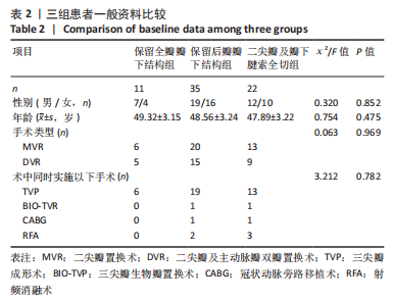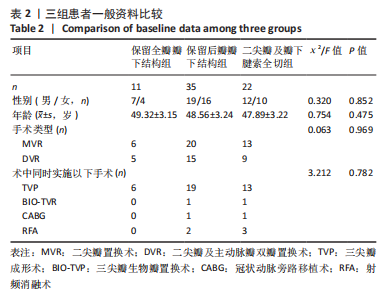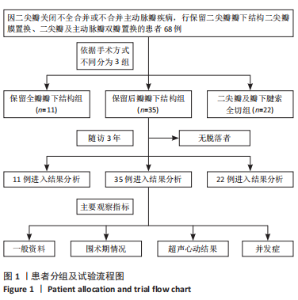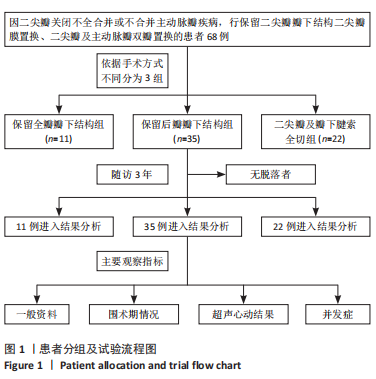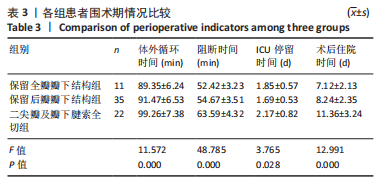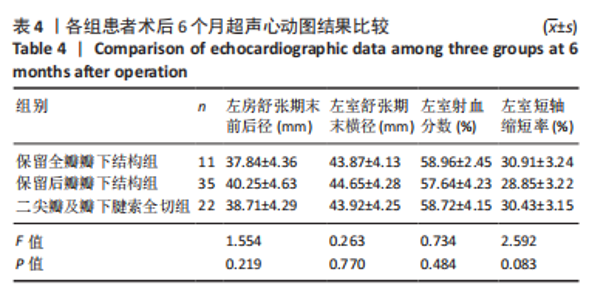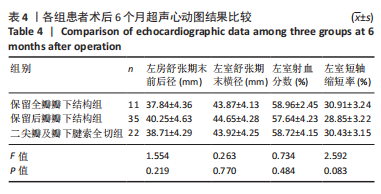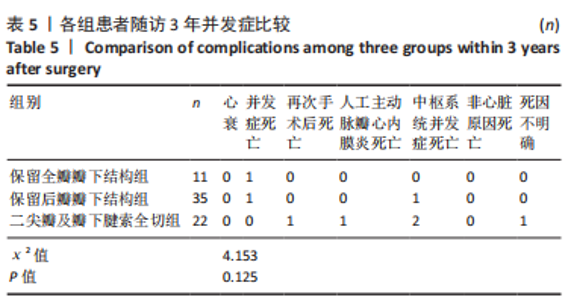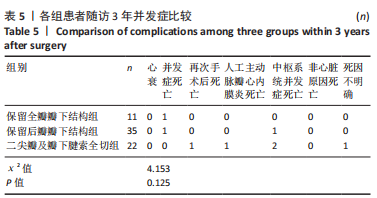[1] 张万青, 戚春梅, 梁克, 等. 多中心二尖瓣狭窄为主型保留瓣膜下结构的瓣膜置换术后中期心功能变化的对照研究[J].广东医学, 2019,40(S1):79-81+87.
[2] HAMEED I, AHMED A, ULLAH N, et al. Valve-in-Valve Transcatheter Aortic Valve Replacement: A Review of Procedural Details, Safety, and Clinical Implications. Cardiol Rev. 2020;28(6):291-294.
[3] RANGANATH P, MOORE A, GUERRERO M, et al. CT for Pre- and Postprocedural Evaluation of Transcatheter Mitral Valve Replacement. Radiographics. 2020;40(6):1528-1553.
[4] 郝秀秀, 韩建成, 高爽, 等. 二尖瓣位生物瓣置换术后瓣膜毁损的临床特征及超声表现[J]. 中国超声医学杂志,2020, 36(1):43-46.
[5] 肖巍,张健群,肖明第,等.保留后瓣及瓣下结构的二尖瓣置换术临床分析[J].中国胸心血管外科临床杂志,2012,19(3):240-243.
[6] 张万青,戚春梅,梁克,等.多中心二尖瓣关闭不全保留瓣下结构瓣膜置换术后中期心功能变化研究[J].海南医学,2018,29(22): 3190-3193.
[7] 李继勇,张健群,伯平,等.不同保留瓣下结构方法行二尖瓣置换术的对比研究[J].心肺血管病杂志,2014,33(4):529-534.
[8] 张富恩,李继勇,伯平,等.乳头肌悬吊固定技术在二尖瓣关闭不全合并左心室功能受损的二尖瓣置换术中的应用研究[J].心肺血管病杂志,2018,37(6):542-546.
[9] 母存富, 薛春竹, 王贤芝, 等. 三种三尖瓣成形术治疗中,重度功能性三尖瓣关闭不全的近,中期临床疗效[J]. 中国医师杂志,2020, 22(8):1252-1255.
[10] NAEIM HA, TAHA EA, TAHA RA, et al. Isolated adult congenital uni-leaflet severe mitral valve stenosis, a case report, and review of literature. J Cardiol Cases. 2019;19(6):177-181.
[11] 潘砚鹏, 陈红卫, 陈文宽, 等. 二尖瓣成形与置换术治疗重度缺血性二尖瓣反流近中期疗效比较[J]. 心肺血管病杂志,2019,38(10): 1032-1035.
[12] FORREST JK, KAPLE RK, RAMLAWI B, et al. Transcatheter Aortic Valve Replacement in Bicuspid Versus Tricuspid Aortic Valves From the STS/ACC TVT Registry. JACC Cardiovasc Interv. 2020;13(15):1749-1759.
[13] YAMANAKA S, TAKANASHI S. Early Structural Valve Deterioration of Tricuspid Pericardial Valve Caused by Native Valve Adhesion. Ann Thorac Surg. 2020;109(3):e175-e176.
[14] 赵海智, 张华军, 杨明, 等. 机器人辅助与胸骨正中切开二尖瓣置换术的生活质量及远期疗效比较[J]. 南方医科大学学报,2020, 40(11):1557-1563.
[15] OVERTCHOUK P, BEN-ALI W, PRENDERGAST B, et al. Comparison of Mitral Valve Replacement and Repair for Degenerative Mitral Regurgitation: a Meta-analysis and Implications for Transcatheter Mitral Procedures. Curr Cardiol Rep. 2020;22(9):79.
[16] URENA M, VAHANIAN A, BROCHET E, et al. Current Indications for Transcatheter Mitral Valve Replacement Using Transcatheter Aortic Valves: Valve-in-Valve, Valve-in-Ring, and Valve-in-Mitral Annulus Calcification. Circulation. 2021;143(2):178-196.
[17] 唐先成, 刘健, 黄击修, 等. 二尖瓣置换术同期射频消融治疗持续性房颤的远期疗效及复发因素分析[J]. 国际心血管病杂志,2020, 47(6):375-379.
[18] BOSKOVSKI MT, NGUYEN TC, MCCABE JM, et al. Outcomes of Transcatheter Aortic Valve Replacement in Patients With Severe Aortic Stenosis: A Review of a Disruptive Technology in Aortic Valve Surgery.JAMA Surg. 2020;155(1):69-77.
[19] 田白羽, 韩杰, 李岩, 等. 老年风湿性二尖瓣病变行二尖瓣修复术与生物瓣膜置换术中期效果比较[J]. 中华胸心血管外科杂志,2020, 36(1):13-16.
[20] NEGM S, ARAFAT AA, ELATAFY EE, et al. Mechanical Versus Bioprosthetic Valve Replacement in the Tricuspid Valve Position: A Systematic Review and Meta-Analysis. Heart Lung Circ. 2021;30(3):362-371.
[21] BOB-MANUEL T, POUR-GHAZ I, SHARMA A, et al. Correlation Between Aortic Angulation and Outcomes of Transcatheter Aortic Valve Replacement With New-Generation Valves. Curr Probl Cardiol. 2021; 46(2):100415.
[22] 郑富臻, 翁国星, 赖宝春, 等. 二尖瓣机械瓣膜置换术后三尖瓣重度关闭不全行全胸腔镜下三尖瓣生物瓣置换[J]. 中国微创外科杂志,2019,19(3):236-238.
|
